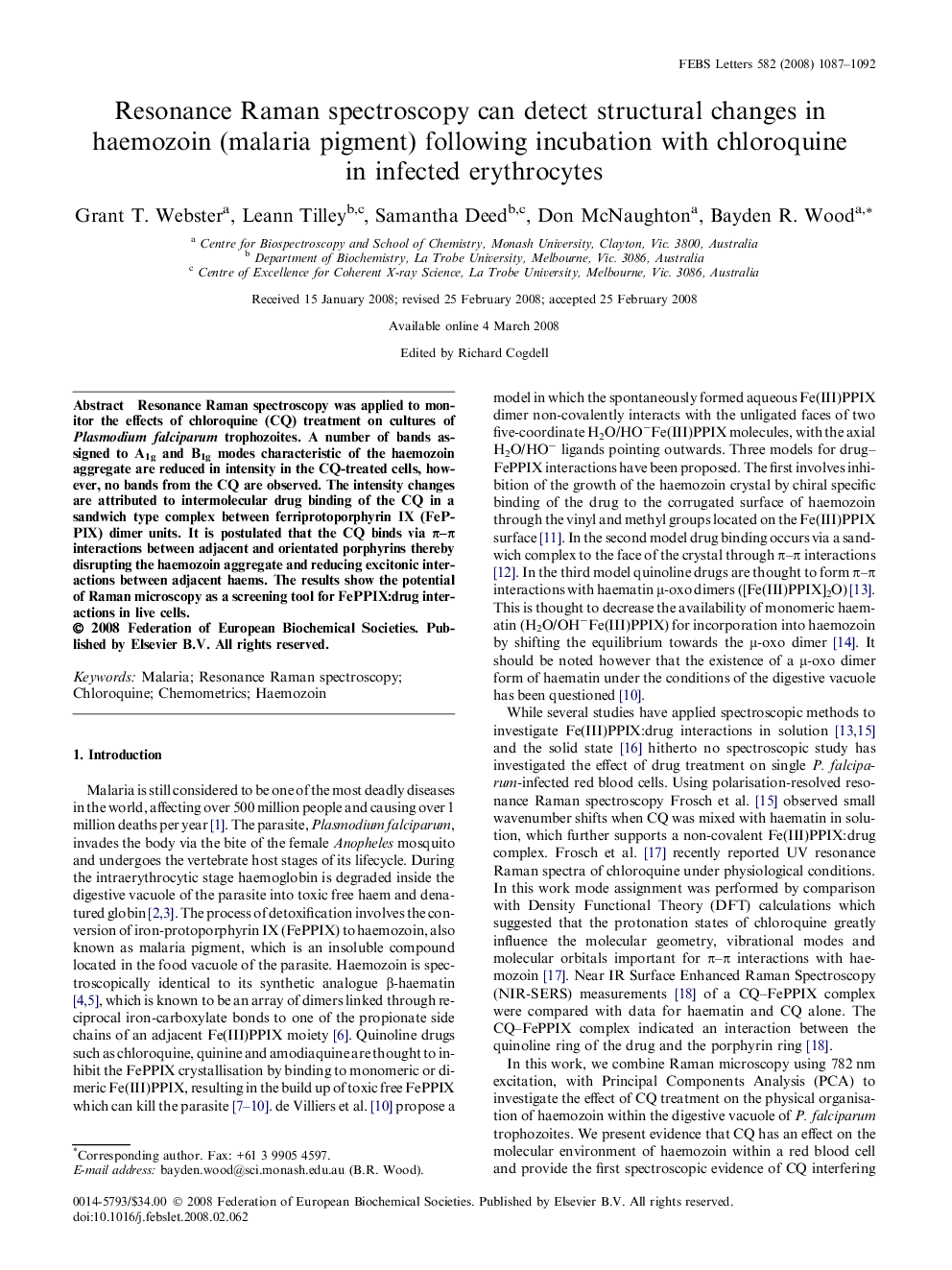| Article ID | Journal | Published Year | Pages | File Type |
|---|---|---|---|---|
| 2050949 | FEBS Letters | 2008 | 6 Pages |
Resonance Raman spectroscopy was applied to monitor the effects of chloroquine (CQ) treatment on cultures of Plasmodium falciparum trophozoites. A number of bands assigned to A1g and B1g modes characteristic of the haemozoin aggregate are reduced in intensity in the CQ-treated cells, however, no bands from the CQ are observed. The intensity changes are attributed to intermolecular drug binding of the CQ in a sandwich type complex between ferriprotoporphyrin IX (FePPIX) dimer units. It is postulated that the CQ binds via π–π interactions between adjacent and orientated porphyrins thereby disrupting the haemozoin aggregate and reducing excitonic interactions between adjacent haems. The results show the potential of Raman microscopy as a screening tool for FePPIX:drug interactions in live cells.
